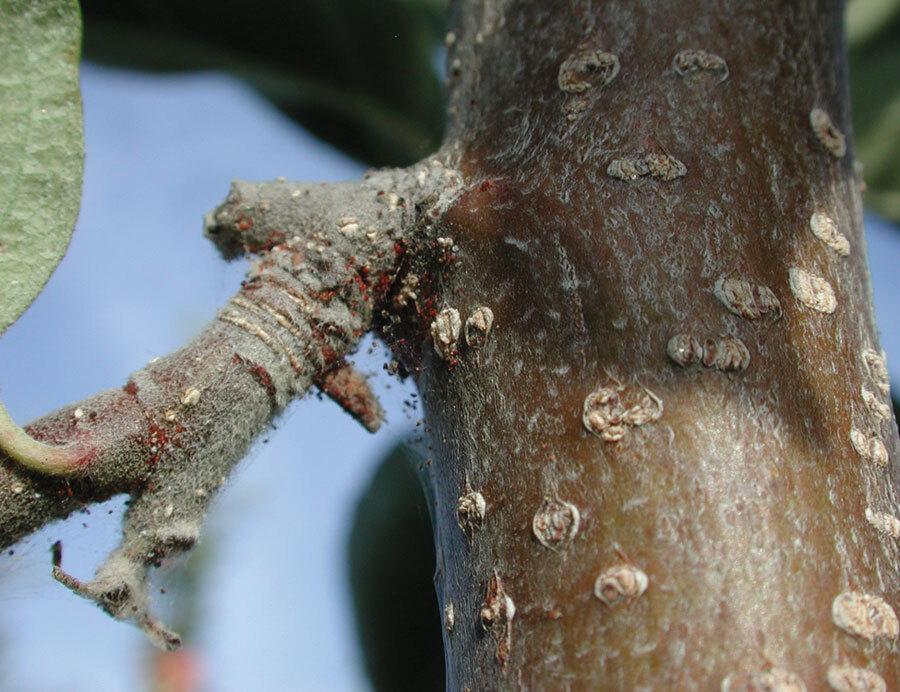General
As the name implies, the European red mite, Panonychus ulmi, is mainly a pest of fruit trees (apple, pear, plum and cherry). However, it can attack a large scale of other woody plants and is occasionally a problem on roses and other ornamentals of the family Rosaceae grown in greenhouses. It originates from Europe (as can be seen from the common name, European red mite) but is now distributed in all important apple growing areas of the world.
Life cycle and appearance of European red mite
The European red mite feeds mainly on the undersides of leaves but moves to upper leaf surfaces when the lower side becomes crowded. Contrary to the two-spotted spider mite, Tetranychus urticae, it does not produce large amounts of webbing. The eggs are about 0.15 mm in diameter, dark red, and oval with small ridges running top to bottom, with a thin stalk on top. They look a bit like an onion. Adult females are about 0.4 mm long, brick red, and oval shaped with white hairs on their back and white spots (tubercles) at the base of the hairs; males are about 0.3 mm long, yellowish red, and more slender and tapered near the hind end.
The development from egg to adult goes faster at higher temperatures and takes approximately two weeks at 21°C; therefore there can be many generations in one year. The European red mite overwinters in the egg stage; the “winter eggs” are laid in the wooden parts of the host plants in autumn.
Damage symptoms
Feeding of European red mites on leaves of trees causes initially brown spots on the leaves and when these coalesce the leaves loose colour; this is often referred to as bronzing. When infestation is heavy, leaves can drop.
